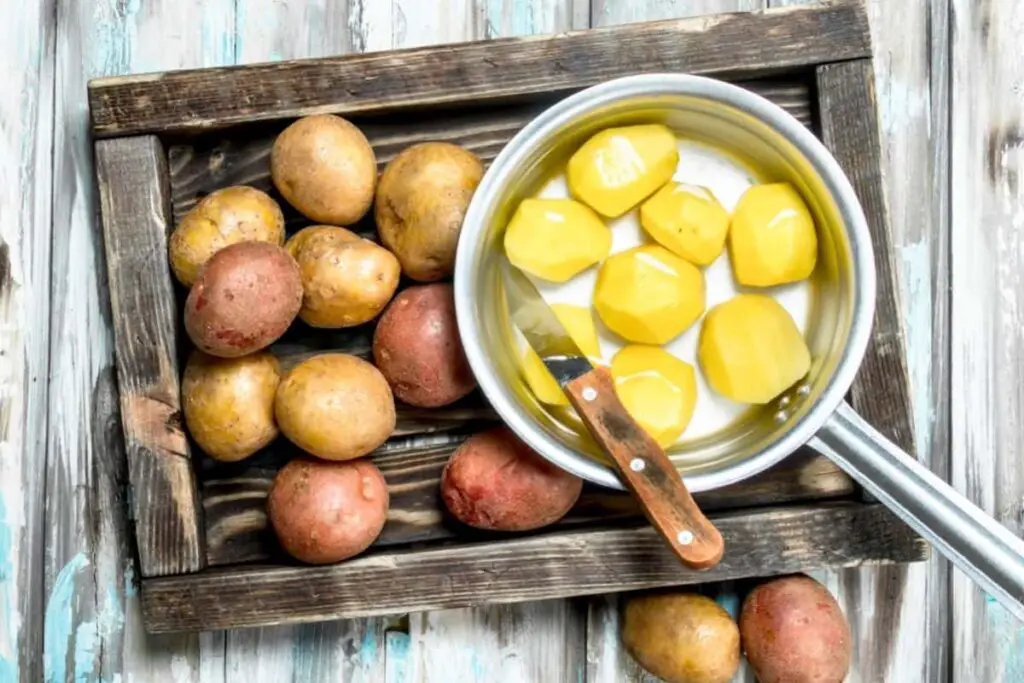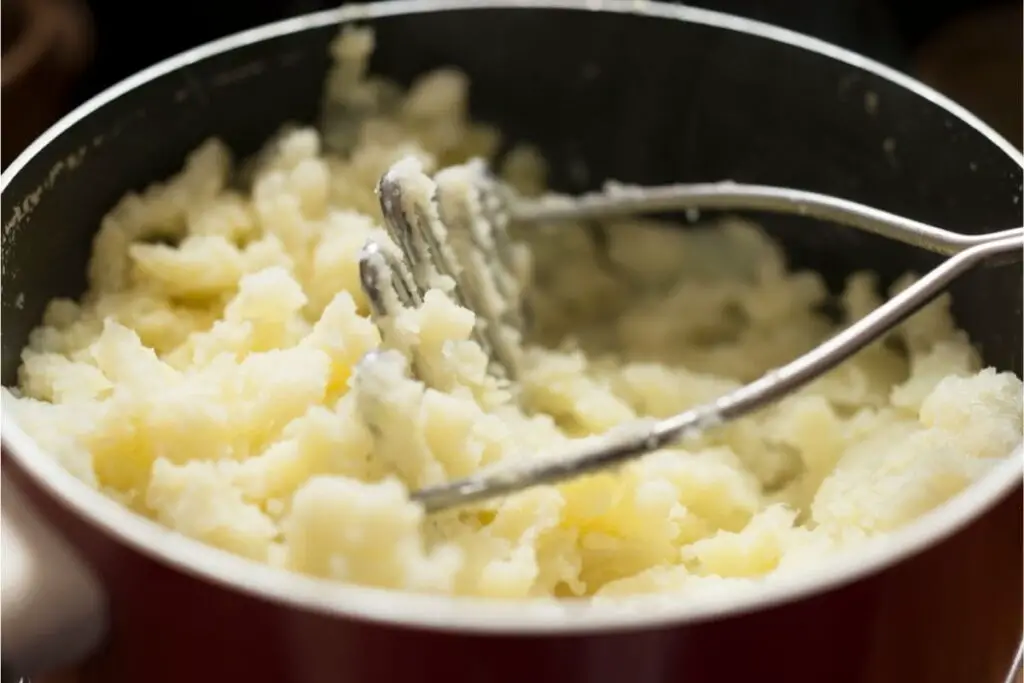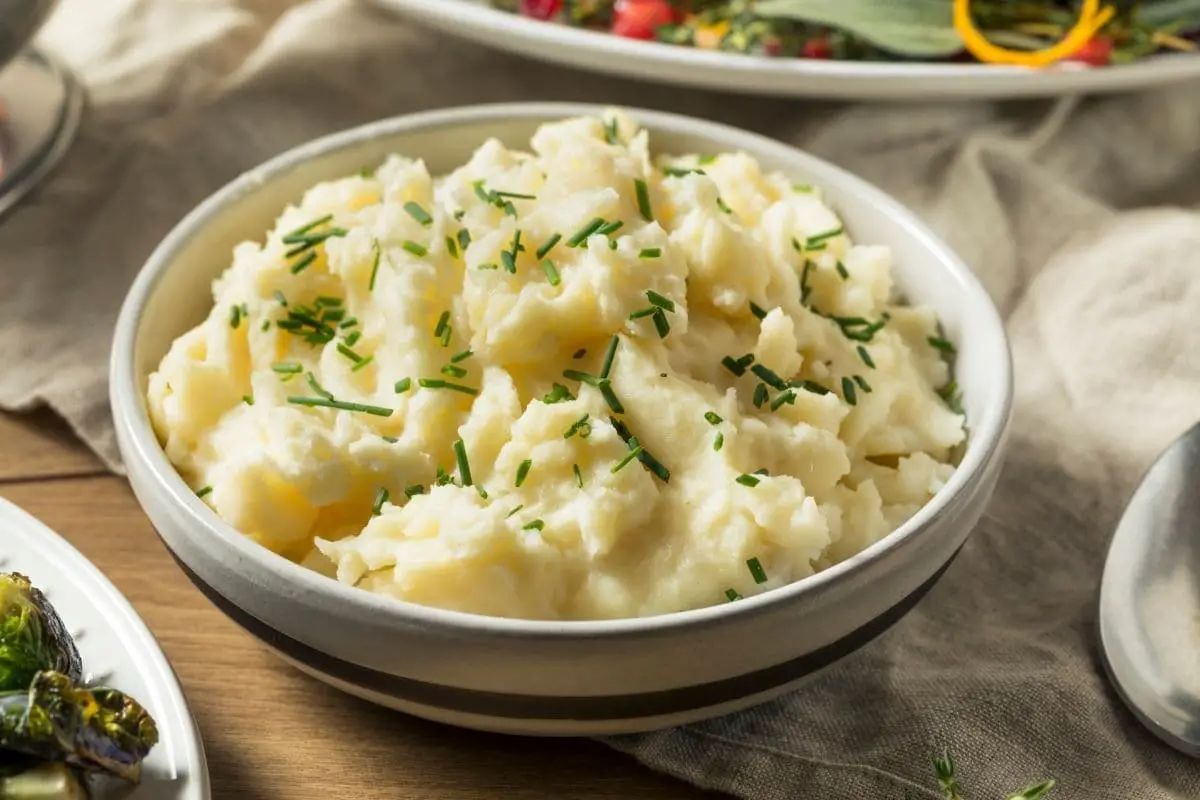Even though mashed potatoes aren’t the most crucial part of a meal you serve your dinner guests, they are essential as they help enhance the flavor of other foods. What is even more important is that this particular side dish is easy to make.
Still, you need to be careful and pay close attention. Otherwise, you end up with mashed potatoes that look unappetizing as there are lumps in them.
We want you to make the best mashed potatoes possible and it is crucial to know what can lead them to turning lumpy. Once you know what is causing this problem, you’ll be able to use our tips below on how to get lumps out of mashed potatoes.
Below, we will provide you with helpful tips to fix your mashed potatoes with lumps. So keep reading and you’ll be serving delicious tasting helpings of this all-time favorite dish time and time again.
Before we show you how to get rid of lumps out of your mashed potatoes, we will first look at what causes this to happen.
What Causes Unwanted Lumps in Mashed Potatoes
There are several common mistakes that home cooks often make when it comes to cooking and mashing potatoes. It could be because you haven’t used the correct type of potato or you didn’t cook them long enough. It could also be a result of you not cutting them up correctly.
Below we look at the most common mistakes that often lead to ending up with lumpy rather than smooth mashed potatoes.
Mistake One: Undercooked Potatoes
This is one of the most common mistakes home cooks make when trying to produce smooth mashed potatoes. If you remove each batch of potatoes you are cooking from the boiling water too soon, it will lead to them being undercooked.
Also, you need to make sure that you place white potatoes in enough water to allow them to cook in the boiling water for enough time. Undercooked potatoes will be a lot more challenging to mash and they will turn lumpy as any raw piece of potato will stick out.
When it comes to cooking potatoes, you must make sure that they remain in the boiling water for at least 18-22 minutes. As soon as they have finished cooking, this is when you should begin the process of mashing them. They will not mash properly if you allow them to cool down too much.
Mistake Two: Using the Wrong Gadget for Mashing
How you mash your potatoes is up to you but it is best to use the right tools for the job. You could, of course, just mash yours up using a couple of forks but you’ll find that there will still be a few lumps in your mashed potatoes.
You could even use a food processor but these tend to make the mash look quite sticky. If you don’t use the correct tools to make mashed potatoes, yours will always end up with lumps in them.
To avoid lumpy potatoes, it is best to use either a simple potato masher or a potato ricer. These will ensure that adequately cooked potatoes will provide you with deliciously smooth mash.
Mistake Three: Using the Wrong Type of Potato
There are many different kinds of potatoes which you can cook these days. Avoid waxy or starchy varieties when following a classic, no-fuss mashed potato recipe.
As soon as you start to mash starchy potatoes, any excess potato starch left in them after cooking will get released. This will result in you ending up with a gooey sticky mess.
So if you can, you should avoid using sweet potatoes or russet potatoes for making your buttery dish of mashed potatoes.

You should also avoid using waxy potatoes such as Red Adirondack, Red Bliss, or Russian Banana. These hold their form more even after being cooked so that they will produce a more chunky mash.
Mistake Four: Not Cutting Potatoes to the Same Size and Shape
If you don’t cut the potatoes up into equal-sized pieces, you will find that each piece will cook differently. You will notice that the smaller pieces will be overcooked and the larger pieces will be undercooked.
As a result, even if you were to use a potato masher, you will find that there will still be some lumps in the final dish.
Mistake Five: Adding Cold Milk and Butter to the Hot Potatoes
As soon as you add anything cold to anything hot, you will have problems. As you will know by now, when boiled potatoes are left to go cold, they become more difficult to mix, and you won’t end up with the perfect crowd-pleasing side dish you had hoped for.
When it comes to making creamy potatoes, make sure that you heat the milk and butter first. Adding hot milk and melted butter to the potatoes will prevent them from losing heat.
We’ve shown you what could cause you to end up with lumpy mashed potatoes but how do you go about fixing this issue when it does happen?
Below we offer some advice that you may find helpful about getting lumps out of your mashed potatoes.
How to Remove Lumps from Your Mashed Potatoes When Undercooked
After you’ve cooked your russet potatoes and removed them from the boiling heat, have you found that they aren’t cooked through evenly? Well, you can do the following instead of putting them back on to cook again in cold water.
Step One: Heat some milk or cream in a separate pan.
Step Two: Pass the cooked potatoes through a potato masher or ricer, place them back in the saucepan, and place them over low heat.
Step Three: Slowly add some of the warm milk or cream to the potatoes and stir and mash until smooth.
Along with this method for helping to get rid of the lumps in the boiled potatoes you are mashing, there are others you may want to try.
How to Remove Lumps from Mashed Potatoes if You Don’t Have A Ricer
If you don’t have a ricer and want to avoid lumps in your mash, use the following steps.
Step One: In a saucepan, place a bit of milk, heavy cream, or sour cream and heat up until warm but not boiling. If you don’t have any heavy cream available, use whole milk and real butter.
Step Two: While the milk is heating up, roughly mash up the potatoes using either a couple of forks or a potato masher.
Step Three: Place the potatoes into an electric food mixer or place them back in the pan and whisk them together using handheld beaters.
Step Four: Now slowly add to the potatoes some of the warm milk a little at a time and blend them together at a slow to medium speed in the blender.
It is essential that you stop every few seconds to check the consistency of the potatoes. If you don’t, you could end up with gluey potatoes rather than a delicious dish.

The best way to avoid having to try and remove lumps from mashed potatoes in the future is to do the following when cooking them:
1. After you peel potatoes and cut them into equal-sized pieces, place them in a pan of cold water. Then bring the water to boil over medium to high heat. This will help to ensure that the potatoes cook more evenly.
2. Make sure that you don’t let the potatoes cook in water at a full boil. Instead, turn the heat down so the water is simmering and then leave them to cook for around 12-15 minutes.
If you still feel that your potatoes aren’t cooked enough after this time, leave them to cook for 3-4 minutes.
3. Add a teaspoon of salt to the water as this will help cook the potato’s starch more thoroughly as it causes the water to boil at a hotter temperature.
Also, adding salt to the water will help provide the potatoes with more depth of flavor.
Let’s Wrap Things Up
Hopefully, you have found the advice in this guide on how to get lumps out of mashed potatoes helpful. With these steps, you should be able to ensure that future dinner parties you have will prove a great success with one of the most popular side dishes out there.
As you can see, there are solutions for every problem when it comes to making favorite dishes like this. So you needn’t worry as the simple ideas we have provided you with above will help you produce smooth, delicious tasting mashed potatoes now and in the future.
We would love to know what you think of the tips and advice provided above, so leave us a comment below.


